Claude Percy Fisher was born in Ireland, then part of Great Britain, in 1893. His childhood and youth were spent in Ireland before he graduated in veterinary science in and was admitted as a Member of the Royal College of Veterinary Surgeons in December 1914. He was immediately commissioned in the Army Veterinary Corps and only four months later was involved in fighting against Ottoman Forces in April 1915in the Dardanelles. Fisher was seconded to the Egyptian Army in mid 1918 and was posted to Sudan where he was appointed Veterinary Inspector in the Sudan Veterinary Service. He served in several parts of the country in that capacity before resigning from the British Army in 1925. Captain Fisher then joined the Sudan Defence Force and continued to work in the Sudan Veterinary Service. He was promoted to the newly created position of Senior Veterinary Officer in 1939. In 1940 he was further promoted to Director of the service (the tenth of 12 British veterinary surgeons to occupy that position) and also promoted in the Sudan Defence Force to Lieutenant Colonel. Fisher retired in 1944 (aged 50), returned to England and never took up further employment. Fisher and his wife spent later years in rural Gloucestershire where they enjoyed the country life. Claude Percy Fisher died in 1985 at the age of 92 years: his wife died seven years later aged 93.
military veterinary surgeons, livestock exports, animal diseases, baggage camels, Royal Army Veterinary Corps
The Sudan was ruled until 1898 by a nationalist group that had wrenched power from Egypt in 1885 [1,2]. Following the reconquest of the Sudan by British ad Egyptian armed forces a Condominium was established between Great Britain and Egypt. A veterinary service set up in 1902 was mainly concerned with the health of the thousands of cavalry, pack and transport animals that were required to operate the country [3]. Between 1902 and 1924 the Principal Veterinary Offices/Directors of the Sudan Veterinary Service were serving officers of the British Army Veterinary Corps seconded to the Egyptian Army. In the latter year the British War Office ceased seconding its army officer to Egypt. Some officers then resigned their commission and were immediately employed by the Sudan Defence Force which meant that Directors were still serving military officers. By this time the emphasis of veterinary work had moved away from transport to meat- milk-producing livestock and prophylactic and curative treatments for production diseases were sought and applied. The export trade also became of considerable importance as a means of earning foreign exchange.
Claude Percy Fisher was the tenth of twelve expatriate directors of the Sudan Veterinary Services during the period of the Anglo-Egyptian Condominium 1899-1955. He served for 26 years in the country from 1918 to 1944, a period of service equalled only by Robert Starmer Audas [4].
Claude Percy Fisher was born to an Irish Protestant family on 12 March 1893 at Baltinglass in the southwest of County Wicklow in Ireland which was at that time part of the United Kingdom [5]. He was baptized shortly afterwards at Dunlavin Church of Ireland (Protestant) Parish Church (Figure 1).
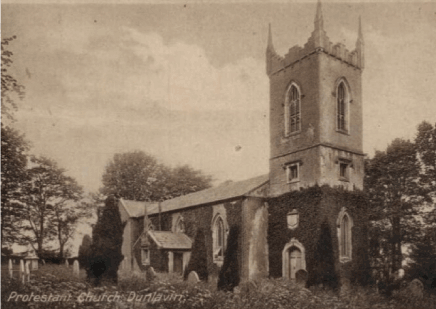
Figure 1. Church of Ireland (Protestant) Parish Church, Dunlavin
On 31 March 1901 Claude, aged 7 and a Scholar, was the youngest of four children (two brothers and twin sisters) living with their parents – Thomas and Susanna – in Dunlavin. His father was a Merchant (in fact a Shop Keeper) obviously in a good way of business as in the 16-room house in addition to the six members of the family there were two female shop assistants, three male shop assistants, a Governess and a general servant: all of these except the last, who was Roman Catholic, professed to being Church of Ireland [6]. In his formative years Fisher was educated at Wesley College, Dublin which, as its name suggests, was (and is) a Methodist foundation. By the time that Claude Percy was 18 and described on 2 April 1911 as a Student he was living with his family, now at House 39 Dunlavin. Father was a General Merchant (although the census return says that the 18-room dwelling is a Public House), older brother Harold was a Shop Assistant, older sister Olive was an Art Student (twin sister Muriel had died), a female resident – who was Presbyterian – was employed as a Bookkeeper, there were three male and two female Shop Assistants and the same Roman Catholic General Service Maid as in 1901 [7].
The Irish census taken on Sunday 11 April 1911 showed Claude’s occupation quite simply as Student (although it was more precise in the case of his sister Olive whose occupation was that of an Art Student) although he most certainly was already studying at the Veterinary College at the University College of Dublin. This is the case because he graduated from the college as a Bachelor of Veterinary Medicine (MVB) in mid-1914. He was registered later in the year as a Member of the Royal College of Veterinary Surgeons (MRCVS) on 15 December 1914 [8]. Earlier in 1914 he was on the Electoral Roll of Dublin City, Mansion Division III, as Voter Number 15 and was occupying the top back room of 17 Hume Street (Figure 2) which was furnished and for which he was paying 17sh 6d a week for board and lodging to the proprietor Miss Mary L Corcoran. Claude Percy Fisher was still at the same address early in 1915 (or the news had not got through to Dublin City Council that he had left), registered as Voter Number 1032 [9].
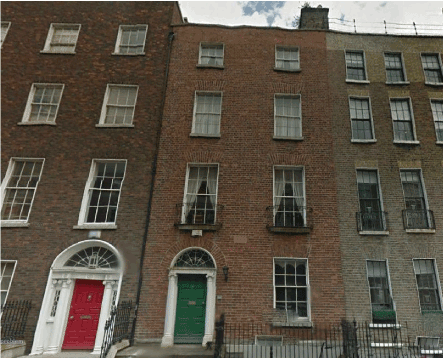
Figure 2. 17 Hume Street, Dublin, in the top floor back room of which Fisher was lodging in 1914 and 1915
Almost immediately after becoming MRCVS Fisher joined the army, which at that early stage of World I was fighting on a broad front in France and Germany. Fisher was commissioned as a Lieutenant on Probation in the Army Veterinary Corps on 24 December 1914 [10]:[1]
|
ARMY VETERINARY CORPS.
The undermentioned to be Lieutenants (on probation): —
Dated 24th December, 1914.
Claude Percy Fisher.
|
Fisher first served as a Lieutenant in the Army Ordnance Corps and landed at Gallipoli in April 1915. He was subsequently attached to the 15th Brigade, Royal Horse Artillery (RHA). Fisher was promoted to Captain on 24 December 1915 only one year after joining the army – an unusually rapid elevation to this rank, probably engendered by the war [11]:
|
ARMY VETERINARY CORPS.
The undermentioned Lts. to be Capts.: —
C. P. Fisher. 24th Dec. 1915.
|
He later had attachments to the Divisional Ammunition Column of the 27th Divisional Artillery in which he served from May 1917 to 1 July 1917. He was then posted to the Mobile Veterinary Section in the 4th Cavalry Division. A short time later he was confirmed as a full Captain on being transferred to the Army Veterinary Corps, which was part of the Regular Army, from his earlier status in the Special Reserve on 18 November 1917 [12,13]:
|
ARMY VETERINARY SERVICE.
A.V.C.—The undermentioned to be Capts. 18 Nov. 1917
Capts., from Spec. Res.: —
C. P. Fisher.
|
In the meantime, on 7 April 1917, the Officer Commanding in Chief the British Forces in France and Belgium, General Douglas Haig, had submitted a report to the War Office regarding the progress of the war and the unfolding of events in the fighting leading up to that date. On 29 May 1917 the first of no less than a set of six Supplements to the London Gazette that contained those “names deserving of special mention” was issued by His Majesty’s Stationery Office. Amongst the several thousands of names of those thus Mentioned in Despatches – it seems probable that the special mention related to the Action at Agagia against the Senussi religious sect on 26 February 1916 in which the 15th Brigade RHA took part – was that of Captain C P Fisher [14]:
|
War Office.
29th May 1917.
The following is in continuation of Sir Douglas Haig's Despatch of 9th April, submitting names deserving of special mention, published in the London Gazette of Tuesday, 15th May, 1917 :—
ARMY VETERINARY CORPS.
Fisher, Capt. C.P.
|
Captain Fisher was later made a War Substantive Major. For his service in the First World War, Claude was awarded the 1914-1915 Star and the British War and Victory Medals, on the Ribbon of the last of which he was entitled to bear an Oak Leaves clasp as he had been Mentioned in Despatches (Figure 3) [15]. The medals were not despatched to him until 5 May 1922 and were first sent to Holt & Co, 3 Whitehall Place, London, as agents for the Sudan Government, as he was already working in Sudan by that date.

Figure 3. 1914-1915 Star, British War Medal, Victory Medal with Oak Leaves Emblem as awarded to Captain C P Fisher and Medal Index Card showing entitlements to medals
On 8 August 1918 Fisher was seconded as a British Officer attached to the Egyptian Army [16]:
|
War Office,
20th October 1918.
REGULAR FORCES.
ARMY VETERINARY SERVICE.
A.V.C.—The undermentioned Capts. are secd, for duty with Egyptian Army: —
C. P. Fisher. 8th Aug. 1918.
|
Veterinary Inspector El Bimbashi C. P. Fisher arrived in Sudan on 8 August 1918[2]. From then until his final departure in 1944 he was posted to various places around the country starting with Khartoum, presumably at Headquarters, where he was located on 1 January 1919 (Table 1). He was then a short while in Kassala Province in the east of the country before being affected to Khartoum Province for a time. Kordofan Province was Claude’s next posting. Kassala in the east of the country and Khartoum well to the west were isolated stations with very few facilities and very little opportunity for a social life among the very expatriate personnel in the administration, medical and military services. The Kordofan posting was probably a short assignment before a return to Khartoum Province was made where he was stationed for at least three years. In 1924 the British War Office decided that it would no longer second RAVC officers to Egypt. Those serving in Sudan were affected by this decision and then had two choices: they could retain their British Army status but would be posted elsewhere or else resign their commissions. Those who resigned were then recruited by the Sudan Defence Force , were granted Sudanese ranks and carried on as before. Captain Fisher was one of those who retired, doing so on 15 July 1925 and receiving a gratuity (presumably in lieu of a pension, for his service with the military [17]:[3]
|
War Office,
14th July1925.
REGULAR FORCES.
ROYAL ARMY VETERINARY CORPS.
The undermentioned Capts. retire, receiving a gratuity. 15th July 1925.
C. P. Fisher.
H. B. Williams,.
|
Source: [19]
By the time Fisher retired from the British Army the Sudan Veterinary Service had developed from a practice that was largely “horse-doctoring” to one that had become a “large animal practice” and could be said to be “flourishing” [20,21]. In 1913, the veterinary services had been organized into four Sections: Survey (later Research), General, Quarantine and Animal. The Survey Section had been unable to obtain a bacteriologist during the First World War and for its first years had confined itself to routine diagnostic work. Captain Richard Hall Knowles was recruited as Veterinary Bacteriologist on 28 August 1922. It was obvious that if a healthy livestock industry were to be established, adequate research and laboratory facilities must be provided. With the limited funds at his disposal Knowles began organising a library, replacing equipment and erecting buildings. Rinderpest, Contagious Bovine Pleuro-Pneumonia (CBPP) and camel trypanosomosis were the most urgent problems and, supported by his Directors, Knowles lost no time in tackling them. He did some “real” research in attempts to produce a vaccine against CBPP, “Naganol”, which had recently come on the market as a curative for camel trypanosomosis was tested and the possibility of local manufacture of anti-rinderpest serum in order to avoid having to import it from Eritrea or Egypt was tested. Camels were, however, still a major means of transport and trypanosomosis was their principal health problem.
With the arrival of arrival of S C J Bennett as Assistant Veterinary Research Officer in 1925 experimental work became much more thorough [21]. Vaccines and prophylactic and curative measures against CBPP and Rinderpest reduced the mortality rate in some areas and were especially useful in allowing exports of cattle to Egypt to continue. Efforts were also made to control and cure camel trypanosomosis. A vaccine institute was established in the south of the country at Malakal as a counter measure to the import of vaccines. With limited staff and restricted mobility (the more widespread use of motor transport from 1928 improved this situation) it was not possible to control all the disease problems as many outbreaks were in the remote provinces of Kordofan and Darfur. Thus, although some success was achieved in areas where the Veterinary Department had access it could not be claimed that serum treatment had greatly reduced deaths in Darfur [22]. A project to improve local horses and bring them up to a standard sufficient for police work was initiated in Darfur and to a lesser extent in Kordofan in 1924 but ultimately failed to achieve any real success [23,24].
On his retirement from th British Army on 14 July 1925, Fisher returned to England. He arrived in London on 30 July 1925 on board the SS Novara, having sailed from Port Sudan, aged 32 and described as an Army Officer: his address in the UK was to be c/o Holt & Co, 3 Whitehall Place (the address to which his war medals had been sent). Fisher returned to Sudan on appointment to the Sudan Government and continued to serve as a Veterinary Inspector. At the beginning of 1927 Claude Percy was working in Kordofan but by the middle of the year, after returning from leave on 5 July he was in Khartoum Province now with the rank of “Kaimakan” (normally equivalent to a Lieutenant Colonel) and accorded the courtesy title “Bey”(Table 1).
Table 1. Outline of the career of Claude Percy Fisher in Sudan, 1918-1944
Date |
Appointment |
Rank and name |
Location |
Notes |
8 August 1918 |
|
|
|
Arrived Sudan |
1 January 1919 |
Veterinary Inspector |
El Bimbashi C P Fisher |
Khartoum |
|
1April 1923 |
Veterinary Inspector |
(Captain) El Bimbashi C P Fisher |
Kassala Province |
|
1 April 1924 |
Veterinary Inspector |
(Captain) El Bimbashi C P Fisher |
Khartoum Province |
|
1 January 1927 |
Veterinary Inspector |
El Bimbashi C P Fisher |
Kordofan Province |
|
1 July 1927 |
Veterinary Inspector |
El Kaimakan C P Fisher Bey |
|
due from leave 5 July |
1 October 1927 |
Veterinary Inspector |
El Kaimakan C P Fisher Bey |
Khartoum Province |
|
1 July 1928 |
Veterinary Inspector |
El Kaimakan C P Fisher Bey |
Khartoum Province |
due from leave 6 July |
1 July 1929 |
Veterinary Inspector |
El Kaimakan C P Fisher Bey |
Khartoum Province |
due from leave 3 August |
1 July 1930 |
Veterinary Inspector |
El Kaimakan C P Fisher Bey |
|
due from leave 17 Sept |
1 October 1930 |
Veterinary Inspector |
El Kaimakan C P Fisher Bey |
White Nile Province |
|
1 January 1931 |
Veterinary Inspector |
Captain C P Fisher MRCVS |
White Nile Province |
|
1 July 1931 |
Veterinary Inspector |
Captain C P Fisher MRCVS |
White Nile Province |
due from leave 18 Sept |
1 April 1932 |
Veterinary Inspector |
Captain C P Fisher MRCVS |
White Nile Province |
leave due June |
1 July 1932 |
Veterinary Inspector |
Captain C P Fisher MRCVS, 4N |
White Nile Province |
leave started 10 June |
1 October 1932 |
Veterinary Inspector |
Captain C P Fisher MRCVS, 4N |
White Nile Province |
due from leave 14 October |
1 April 1933 |
Veterinary Inspector |
Captain C P Fisher MRCVS, 4N |
White Nile Province |
leave started 26 June |
1 October 1933 |
Veterinary Inspector |
Captain C P Fisher MRCVS, 4N |
White Nile Province |
due from leave 1 October |
1 July 1934 |
Veterinary Inspector |
Captain C P Fisher MRCVS, 4N |
White Nile Province |
leave started 8 July |
1 October 1934 |
Veterinary Inspector |
Captain C P Fisher MRCVS, 4N |
White Nile Province |
due from leave 14 October |
1 April 1935 |
Veterinary Inspector |
Captain C P Fisher MRCVS, 4N |
White Nile Province |
tour of duty to El Obeid |
1 October 1935 |
Veterinary Inspector |
Captain C P Fisher MRCVS, 4N |
White Nile Province |
due from leave 27 October |
1 January 1936 |
Veterinary Inspector |
Captain C P Fisher MRCVS, 4N |
Kosti [White Nile] |
|
1 October 1936 |
Veterinary Inspector |
Captain C P Fisher MRCVS, 4N |
El Obeid [Kordofan] |
due from leave 25 October |
1 July 1937 |
Veterinary Inspector |
Captain C P Fisher MRCVS, 4N |
El Obeid |
leave started 1 August |
1 October 1937 |
Veterinary Inspector |
Captain C P Fisher MRCVS, 4N |
El Obeid |
due from leave 7 November |
1 April 1938 |
Veterinary Inspector |
Captain C P Fisher MRCVS, 4N |
Khartoum |
leave started 7 April |
1 July 1938 |
Veterinary Inspector |
Captain C P Fisher MRCVS, 4N |
Khartoum |
due from leave 13 July |
1 April 1939 |
Senior Vet Inspector |
Captain C P Fisher MRCVS, 4N |
Khartoum |
leave started 6 April |
1 April 1940 |
Senior Vet Inspector |
Captain C P Fisher MRCVS, 4N |
Khartoum |
leave started 8 April |
1 July 1940 |
Senior Vet Inspector |
Captain C P Fisher MRCVS, 4N |
Khartoum |
due from leave 12 July |
1 July 1941 |
Director |
Captain C P Fisher MRCVS, 4N |
Khartoum |
|
1 April 1943 |
Director |
Lt-Col C P Fisher MRCVS, 4N |
Khartoum |
|
1 January 1944 |
Director |
Lt-Col C P Fisher MRCVS, 4N |
Khartoum |
Retiring |
1 July 1944 |
Director |
Lt-Col C P Fisher MRCVS, 4N |
Khartoum |
Retiring |
? July 1944 |
|
|
arrived Liverpool 14 August 1944 |
Continuing to serve in Khartoum Province until mid 1929, he had been on home leave in both 1927 and 1928. In 1929 he was due back on duty on 3 August, about one month later than his two previous leaves. The very good reason for this delayed return was because during that leave he had married Miss Joan Wrangham [25]. The wedding took place at the church of the Holy Trinity, Kensington Gore, Middlesex on 20 April 1929. Claude Percy’s profession on his marriage certificate was given as Captain, Retired Army Officer and he was living at Church House, Kensington Gore, his father being Thomas Fisher, Gentleman: Joan had been born on 22 January 1899 and at the time of her marriage she was a spinster aged 30 with no employment and living at 46 Albert Hall Mansions, SW7, the daughter of Thomas Harris Wrangham, Gentleman, Deceased (Figure 4) [26]. Joan Fisher did not travel to Sudan with her husband but went later, aged 30 and with no occupation, First Class from Liverpool to Port Sudan on SS Gloucestershire of the Bibby Line departing Liverpool on 11 October 1929, address care of Bibby Bros Liverpool [27].

Figure 4. Marriage certificate of Claude Percy Fisher to Joan Langham (marriage register of the Parish Church of the Holy Trinity, Kensington Gore)
Joan presumably joined her husband in Khartoum. The couple took leave again in 1930 and returned to Sudan on 17 September but this time to Kosti, the capital city of White Nile Province. The couple were on leave again in 1931 but Claude Percy returned to Kosti before his wife. She was delayed because the only child of Claude Percy and Joan was born on 21 October 1931 at 8 Avonmore Mansions, North East Fulham (Figure 5) [28]. The girl child was then baptized as Sheelah Louise Fisher on 16 December at the Church of the Holy Trinity with All Saints, Kensington Gore (no evidence has been found to indicate that she ever went to Sudan). Claude Percy Fisher’s mother died on 3 January 1934 aged 82 and she was followed by his father on 4 May 1939: both are buried in the churchyard of St Nicholas in Dunlavin as are his two older sisters Olive and Muriel [29].
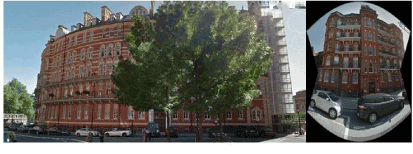
Figure 5. London apartments of the Fishers: 6 Albert Hall Mansions, SW7 (where Mrs Fisher lived before ehr marriage); 8 Avonmore Mansions, North East Fulham (where Mrs Fisher gave birth to her only child)
Fisher stayed at Kosti in White Nile Province to where he had now been posted as Veterinary Inspector. In 1932 Fisher left on annual leave on 10 June to return on 14 October and again departed on leave in 1933 on 26 June to return on 1 October (Table 1). Service in the Sudan at that period often brought a decoration from the Khedive of Egypt in the form of the Order of the Nile, Egypt’s then highest state honour. Instituted in 1915 by Sultan Hussein Kamel the Nile was awarded for exceptional services to the nation. Fisher was awarded the Order of the Nile, Fourth Class (Officer) – the next to lowest of the five classes of the order – sometime early in 1932 and such an award was always listed in official publications after he recipient’s name (Table 1). It was not, however, until almost two years later, on 15 February 1934, that Fisher was authorized by King George V to accept and wear the medal [30]:
|
Whitehall, February 15, 1934.
The KING has been pleased to give and grant unto Captain Claude Percy Fisher, His Majesty's Royal licence and authority to wear the Insignia of the Fourth Class of the Order of the Nile, which Decoration has been conferred upon him by His Majesty the King of Egypt, in recognition of valuable services rendered by him.
|
The global depression of the late 1920s and 1930s coincided with years of poor or moderate rains and difficult grazing conditions over most of the central Sudan. Quarantine stations had, however, been set up along the main trade routes and at the frontier export places both inland and at the seaports in order to facilitate internal and international trade, more veterinary stations had been put in place and early extension efforts were made to encourage producers to adopt better feed, health and management practices [31].
The worst epizootic of rinderpest for a considerable number of years broke out in 1930. More than 15 000 deaths from the disease were reported of which almost half was in Kordofan Province. Most of the main cattle producing areas were affected, however, until the epizootic was brought under control in 1932. Matters might have been much worse had it not been for three important factors: first, the confidence of the cattle owners in the Department had increased and they were now regularly reporting disease occurrence; second, motor transport greatly appeased the burden on the Department from 1928; and, thirdly, local production of anti-rinderpest serum and small quantities of spleen-tissue vaccine proved beneficial. Although laboratory output never fully met the total demand sufficient serum was produced for reserves to be held at strategic points to ensure prompt action as fresh outbreaks were reported. Local authorities were also keen to have their own tribal staff and in 1929 the first tribal veterinary retainers had been trained and appointed and, as numbers grew, proved an invaluable addition to the field staff [20].
The use of Egyptian ranks had been discontinued in the staff returns at the beginning of 1931, but Captain C P Fisher continued to be based in White Nile Province until mid 1936, taking his leave every year as usual. On return from leave in October 1936 he was transferred from White Nile Province to Kordofan Province where he was based in the capital El Obeid and where he remained (other than for annual leave!) until the end of 1937. At the beginning of 1938 Captain Fisher was transferred to Khartoum and was promoted (along with two other Veterinary Inspectors) to the newly created cadre of Senior Veterinary Officer at the beginning of 1939 (Table 1). Fisher departed on leave on 6 April 1939 but his wife did not return to Sudan with him. On 26 September of that year, when the 1939 Register was made, Joan Fisher was living at 8 Herdson Road, Folkestone, together with daughter Sheelah and Joan’s mother Louise Wrangham who had been a witness at Joan’s wedding to Captain Fisher) [32].
Life for expatriates in the Provinces of Sudan was difficult for many reasons, including the isolation and the harsh climate. There was, of course, the annual three months leave, travelling on some of the world’s best ocean liners First Class to and from England were some compensation for the hardships. A posting to Khartoum provided a much better quality of life and officers benefited from the perquisites granted to an expatriate in Sudan government service (Figure 6). Government officers were provided with quality housing and access to an exclusive club for high officials. There were formal lunches, balls, horse racing, tennis and billiards (snooker was for the working classes in the north of England and Scotland!). Polo was a very popular pastime by polo (Fisher played against the Prince of Wales, the heir to the British throne, in 1930 The women – still largely outnumbered at that time as early marriage in the Sudan Political Service was actively discouraged – paid calls on each other and played bridge (Figure 7). One description from an officer newly arrived in the country sums it up [33]:
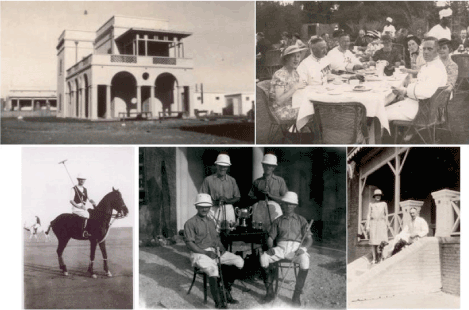
Figure 6. Pictures from a senior officer’s career in Sudan, 1930s (the Fisher official residence; formal lunch at the club; a polo team; Fisher on polo pony)

Figure 7. Life in Khartoum in the 1930s: Captain Fisher playing polo against the Prince of Wales; Mrs Fisher’s Visiting Card
|
The British went home to their charming houses on the river with the well irrigated gardens and trees while their subordinates were relegated do dismal rows of houses in the back parts. Khartoum was no longer a dusty outpost but it remained an artificial enclave, European in appearance and tone, well tended and well watered, more Mediterranean than African. In 1933 it seemed the capital of a wealthy and prosperous country .... “tea and tennis yesterday and only the noise of the kites and the little black ball boys to remind us that we were in tropical Africa”.
|
Shortly after the outbreak of World War II, on 24 August 1939, Fisher’s service record indicates that he was on the Reserve of Officers with the War Substantive Rank of Major. He was able to go on leave in 1940 but annual leave to England seems to have stopped for the rest of the 1939-1945 War. Captain C P Fisher became Director of the Sudan Veterinary Services in 1940 and was still listed as a Captain in mid 1941 (Table 1) but was then promoted to Lieutenant Colonel. At this time he still appeared as a Captain in British Army lists under the heading of Regular Army Reserve of Officers: at the end of 1939, for example, Captain C. P. Fisher, employed by the Sudan Government, was entered as a Class III reserve officer of the Royal Army Veterinary Corps [34].
World War II virtually halted Sudan’s progress. The large military force in Egypt was augmented when Italy joined Germany in May 1940 and became an Allied enemy. Sudan was now on the war front in Eritrea and Abyssinia (colonized by Italy in 1936). Meat supplies from Europe to Egypt and Palestine were completely cut off. The prospect of a campaign against Italian East Africa being conducted from Sudan meant that animal transport would be required in large numbers. Fisher, as Williams before him, was quick to appreciate this. The Veterinary Department thus concentrated on ensuring a regular supply of healthy livestock to Egypt and on buying up transport animals. In March 1941 Fisher reported [35]:
|
The veterinary service and remounting of the Sudan Defence Force at the end of the year (1940) became a very important activity. Apart from about 4000 camels, 1600 remount horses were purchased, castrated and vaccinated against African Horse Sickness. In the early part of the year, in view of the smallness of the Force, it was considered that the most economical way of providing a veterinary service was to commission a number of Veterinary Inspectors as combatant officers and post them to mounted units. This was done, but later it was found that the increase of veterinary service made the system impossible, and it became apparent that to continue to use Veterinary Officers as combatant officers, and so restrict their veterinary activities to their particular units, was wasteful and unsatisfactory. Accordingly, towards the end of the year an Army Veterinary Organisation was in the process of formation under the control of the Director, Sudan Veterinary Service, who was to be suitably commissioned in the Sudan Defence Force for the purpose of exercising such control.
|
Essential activities were maintained but were subordinated to the war effort. The Khartoum Veterinary School, with its potential impact on the future of animal health, remained active, the first students passing out in January 1940. The Registrar was very busy as he also doubled as Veterinary Inspector for Khartoum Province (Waldo Hearne Glanville, who was to succeed Fisher as Director in 1944). In these unusual times the goodwill and confidence fostered over many years with the pastoral tribes now showed its value. Disease control in the most remote partss of the country was carried out mainly by tribal veterinary scouts with very little supervision. There was a reasonable although not excessive supply of prophylactics and thanks to the alertness and helpfulness of the tribal authorities the major diseases were kept in check throughout the war.
The qualities of the camel-owning tribes were put to the test in 1940 and 1941 when thousands of transport camels were required for Wingate's Abyssinian campaign. Over 3000 camels had been bought and personnel enlisted to manage them but further purchases would have been too expensive, slow and unwieldy for the plans being made to invade Abyssinia. Volunteers were thus called for from the tribes, thes camels being hired on a daily basis and compensation being paid in the event of injury or loss. The Political Service organized thousands of men under their sheikhs who descended eastwards and southwards the assembly point at Roseires near the border with Abyssinia. Some 16 000 camels were supplied to the 4th and 5th Indian Divisions to carry supplies and weapons without which, according to the force commander, the operations would have failed [20,21].
The peak of Sudan's active participation in the war were 1941 and 1942. In the latter year exports of livestock to the British military in the Middle East numbered 50 834 cattle and 155 045 sheep. From 1941 to August 1946 a total of 212 003 head of cattle and 581 053 sheep worth were sent to the Middle East with no interruption in supply except for seven weeks during 1944 when trade was stopped due to an outbreak of foot-and-mouth disease in a group of cattle awaiting export [20,21].
The Sudan Veterinary Service was temporarily re-united in 1941, after a gap of 16 years, with the Royal Army Veterinary Corps when Number 1 Veterinary Evacuation Station was moved to Sudan to serve as the base animal hospital for the East African campaign. Fisher was granted the rank and title of Assistant Director of Veterinary and Remount Services (ADVRS) [36,37].
Fisher remained as Director of Sudan Veterinary Services until July 1944 when he retired and returned to England. Claude Fisher, a Sudan Government Officer aged 51, boarded the MV Britannic of Cunard White Star Line at Port Said and arrived at Liverpool on 14 July 1944 whither he proceeded to Flagstones, Old Point, Middleton on Sea [37]. Shortly before his final departure some important events occurred in Fisher’s life. In early April 1944 he received. probably for his role as ADVRS a Mention in Despatches which was quickly followed by his Order of the Nile 4th Class being upgraded to the 3rd Class Order [38,39]:[4]
|
War Office, 6th April 1944.
The KING has been graciously pleased to approve that the following be Mentioned in recognition of gallant and distinguished services in the Middle East: —
Royal Army Veterinary Corps.
Maj. (temp. Lt.-Col.) C. P. Fisher (20337) (Res. of Ofi.).
|
|
Whitehall, June 8, 1945.
The KING has been pleased to give and grant unto the undermentioned gentlemen His Majesty's Royal licence and authority to wear Decorations, of the Order oi the Nile conferred upon them by His Majesty the King of Egypt, in recognition, of valuable services rendered by them: —
Decoration of the Third Class.
Captain Claude Percy Fisher, Director of Veterinary Services, Sudan.
|
The third event at this time, perhaps of lesser importance, was his participation as a Member of the Soil Conservation Committee on account of his position as Director of Veterinary Services. Whilst on this committee he wrote two technical notes, the second being somewhat surprising as one would not expect him to have been an expert on soil properties [40,41].[5] In another intervention he expressed a view that no real hardship would result from barring to grazing camels, the area lying to the south of the railway from Gedaref to El Obeid as the nomads had ample grazing grounds outside this area.
After his retirement in 1944 Fisher never worked again. In 1953 and 1954 Claude Percy and Joan together with daughter Sheelah were living at Flat 12, Stack House, Cundy Street, London SW1. In the early 1960s the couple moved to Gloucestershire and installed themselves at Jenners Cottage in the village of Poulton near Cirencester (Figure 8) [42,43].[6]
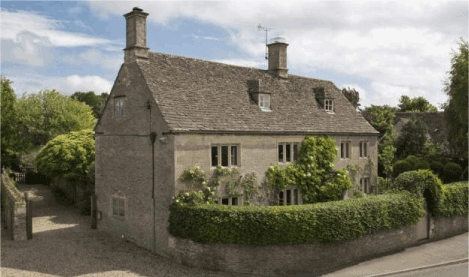
Figure 8. Jenners Cottage, London Road, Poulton: the home of Lieutenant Colonel and Mrs Fisher in the 1960s and 1970s
At Poulton, Claude Percy apparently slipped easily into the role of an English country gentleman. Part of this role is to enter fully into the social and economic life of the village and to undertake “civic duties” and he was for a time Chairman of the local government body, Poulton Parish Council. Another part of the role is to participate in field sports, so he probably fished and joined shooting parties. He was a very keen horseman and rode to hounds with the Vale of the White Horse hunt until a very advanced age. He rode his favourite horse, Tom (Figure 9), in Cirencester Park with permission from and where he often met the owner Earl Bathurst. When Tom died at well in excess of 20 years old, coupled with a bout of shingles in himself, Claude Percy was a less than happy man.
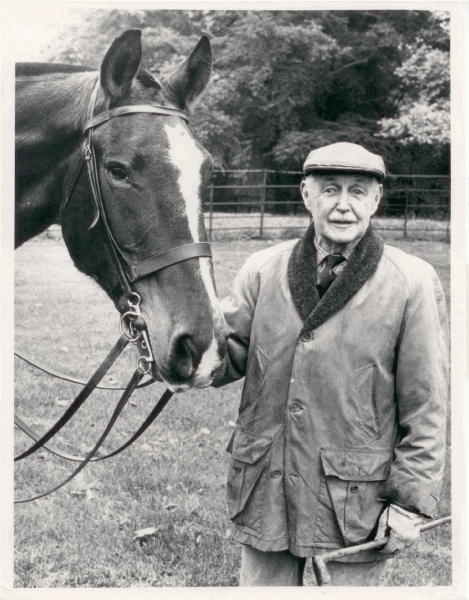
Figure 9. Claude Fisher with”Tom” in Cirencester Park in the 1970s
Late in life the couple moved to Chesterton House in Chesterton Lane in Cirencester. Claude Percy Fisher died there on 14 September 1985 at the age of 92 [44]. Notice of his death appeared in The London Times Newspaper of 19 September. He was buried in the churchyard of St Mary, the parish church of Poulton, but somewhat surprisingly there is no headstone on the grave (Figure 10). Probate was granted at Llandaff (Wales) on 4 November 1985, his effects being valued at £100 166 [45]. Sheelah Louise Fisher was later granted Arms for Fisher (Figure 11) on 21 October 1993 by an Earl Marshal's warrant dated 1 December 1992:
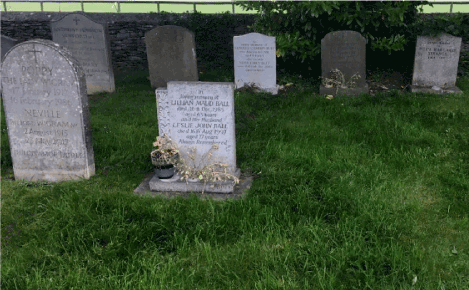
Figure 10. The grave (to the right of the headstone in the name of Lilian Maud Bell) close to the west wall of the churchyard (photo: Reverend John Swanton)
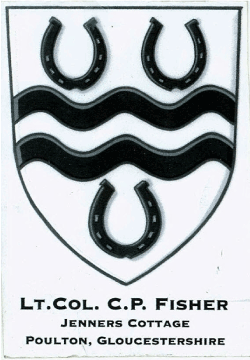
Figure 11. Arms granted to Sheelah Fisher for her father Lieutenant Colonel Claude Percy Fisher
|
Argent, two bars wavy between three horseshoes reversed Sable; the Arms to be borne by Sheelah Louise Fisher de Avendaño and by her descendants and to be placed on a memorial or otherwise displayed to the memory of her late father.
|
Joan Fisher, née Langham, lived for seven years afer her husband’s death, until she died aged 93 on 25 January 1992 [46]. She was buried on 31 January in St Mary’s churchyard, Poulton.
Claude Percy Fisher made a conscious decision not to return to Ireland on his retirement. If, however, he wanted to forget his roots, the people of Dunlavin did not forget him: his name was inscribed twice on their Memorial to the men of the village who had fought in two World Wars (Figure 12).
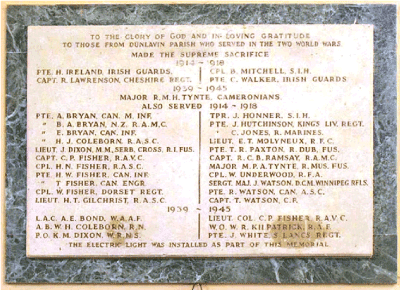
Figure 12. Dunlavin War Memorial showing that C P Fisher took part in both World Wars
I am greatly indebted to Señor Miguel de Avendaño, maternal grandson of Claude Percy Fisher, for much of the personal information relating to his grandparents and also for allowing the use of several family photographs. The Reverend Canon John Swanton, Team Rector, South Cotswolds Team Ministry, kindly located the grave of the Fishers and provided the author with the photograph that is Figure 10.
[1]The veterinary services were not given authority by King George V to use the Royal prefix until 1918: the Army Veterinary Corps then became the Royal Army Veterinary Corps (RAVC).
[2]Bimbashi was an Egyptian Army rank equivalent to a British Major: officers seconded from Britain to Egypt were invariably given local ranks more senior than their British substantive ones. Kaimakan to which rank Fisher was rapidly promoted after he joined the Sudan Defence Force was equivalent to a Lieutenant Colonel in the British Army and also entitled the holder to the courtesy title of Bey (Sir).
[3]The H. B. Williams referred to in the notice was Fisher’s immediate predecessor (1934-1940) as Director [18].
[4]The Third Class decoration had the title of Commander. Another gentleman mentioned in the notice was Waldo Hearn Glanville, Esq., Chief Veterinary Inspector and Registrar, Khartoum Veterinary School, who received the Fourth Class (Officer) Order and who succeeded Fisher as Director. As Fisher received a Mention in Despatches he would also have been eligible for award of the 1939-1945 Star, regardless of any other right to this campaign medal, and allowed to bear an Oak Leaf clasp on the ribbon: he may also have received the War Medal 1939-1945.
[5]‘usher’ Calotropis procera is a shrub or small tree native to Africa but has been introduced to many parts of the world in part because of its medicinal properties although this is offset to some extent by the noxious nature of its sap. It is a serious weed pest in overgrazed pastures and rangelands and on stubbles and fallows and is a pioneer on disturbed soils especially along roadsides and tracks (Author’s own observations). Fisher’s note remarks on its spread around El Obeid town in the period from 1926 (when he was first posted to Kordofan, see Table 1) and 1944 and makes further observations on its heavy presence around every village as noted when travelling by train from El Obeid to Kosti.
[6]Jenners Cottage is “A charming Grade II listed village house understood to date back to the mid 18th century together with a separate cottage. It is a Cotswold stone former farmhouse with a stone tiled roof and two hipped dormer windows on the 2nd floor. A wealth of period features remains. Key features are 3 reception rooms, kitchen/ breakfast room, 5/6 bedrooms, 3 bathrooms, workshop, studio, mature gardens and gravelled parking. Guide price: £945,000 on 3 September 2015. Estimated value in 2017 £1,167,000 (Estate Agent’s blurb at: http://www.rightmove.co.uk/property-for-sale/property-54488324.htm)l.
- Churchill WS (1899) The River War (2 vols). Eyre and Spottiswoode Ltd, London. Available at: http://www.gutenberg.org/files/4943/4943-h/4943-h.htm.
- Colville HE (1889) History of the Sudan Campaign (two volumes). Her Majesty’s Stationery Office, London.
- Smith VR (1902) Annual Report: Veterinary Department, 1902. In: Reports on the Finances, Administration and Condition of the Sudan :1902. Al-Mokattam Printing Office, Cairo (1905) 202-207.
- Wilson RT (2018) Directors of Veterinary Services in the Anglo-Egyptian Sudan: Robert Starmer Audas (Assistant Director, 1925-1932) 1909-1935. Intern J Vet Ani Med 1: 109.
- GRO (1893) Ireland, Civil Registration Indexes 1845-1958: Baltinglass, 2: 368. General Register Office, Dublin.
- NAI (1901) Ireland Census 1901. http://www.census.nationalarchives.ie/pages/1901/Wicklow/Dunlavin/Dunlavin_Town/1808727/. National Archives of Ireland, Dublin.
- NAI (1911) Ireland Census 1911. http://www.census.nationalarchives.ie/pages/1911/Wicklow/Dunlavin/Dunlavin_Town/889228/. National Archives of Ireland, Dublin.
- Clare Boulton, Head of Library and Information Services, RCVS Knowledge: personal communication 11 April 2017.
- DCA (1915) http://databases.dublincity.ie/burgesses/search_new.php? searchtype=street&year=1915&address01=HUME%20STREET. Dublin City Archives, Dublin.
- London Gazette (1915) https://www.thegazette.co.uk/London/issue/29043/supplement/598.
- London Gazette (1916) https://www.thegazette.co.uk/London/issue/29567/supplement/4443.
- Johnson RM (1921) 29th Divisional Artillery War Record and Honours Book 1915-1918. Part III. Record of Officers’ Services between the Gallipoli landing (25th April, 1915,) and the Commencement of the Armistice (11th November 1918). Royal Artillery Institutions, Woolwich.
- London Gazette (1917) https://www.thegazette.co.uk/London/issue/30385/supplement/11907.
- London Gazette (1917) https://www.thegazette.co.uk/London/issue/30101/supplement/5324.
- National Archives n.d. National Archives: War Office and Air Ministry: Service Medal and Award Rolls, First World War. WO329. National Archives of the UK, Kew.
- London Gazette (1918) https://www.thegazette.co.uk/London/issue/30974/supplement/12661.
- London Gazette (1925) https://www.thegazette.co.uk/London/issue/33066/page/4702.
- Wilson RT (2019) Directors of Veterinary Services in the Anglo-Egyptian Sudan: Harold Baskerville Williams (Director 1934-1940), 1920-1940. Anim Husb Dairy Vet Sci 3: 1-8.
- Sudan Government (1919) Monthly return of senior officials, Sudan government, and British officers temporarily employed in Sudan government service, showing appointments & stations on 1 April 1919 and probable moves during the month [and other monthly and quarterly returns in same series].
- Jack JDM (1961) Part V the Sudan. In: West JP (ed) A History of the Overseas Veterinary Services Part One. British Veterinary Association, London 123-143.
- Tvedt T (1983) Colonial Technicians: The Sudan Veterinary Service 1898-1956. Thesis. University of Bergen, Bergen, Norway.
- Wilson RT (1979) The incidence and control of livestock diseases in Darfur, Anglo-Egyptian Sudan, during the period of the Condominium 1916-1956. Inter J African Histori Studies 12: 162-182.
- Audas RS n.d. Horse breeding in the Sudan (SAD.479/10/5-12). Sudan Archive, Special Collection, Durham University, Durham.
- Wilson RT (1977) The horse improvement scheme in Darfur, Anglo-Egyptian Sudan: Policy and practice during the Condominium period 1916-1956. Sudan Notes and Records 58: 190-198.
- GRO (1929) England and Wales Civil Registration Indexes, Marriages. Saint George, Hanover Square 1a 915.
- BNA (1929) Marriage Register, Holy Trinity, Kensington Gore; GBPRS_WSMTN_005616491_00210. National Archives, Kew.
- BNA (1933) Board of Trade: Commercial and Statistical Department and successors: Outwards Passenger Lists. BT27. Records of the Commercial, Companies, Labour, Railways and Statistics Departments. Records of the Board of Trade and of successor and related bodies (TNA_BT27_1240_00_0015_P_0002F). National Archives, Kew.
- GRO (1931) England and Wales Civil Registration Indexes, Births. Fulham, 1a 366.
- Cemetery Records Online, Interment.net. Saint Nicholas C of I Churchyard Dunlavin, County Wicklow, Ireland. http://www.interment.net/data/ireland/wicklow/stnick/.
- London Gazette (1934) https://www.thegazette.co.uk/London/issue/34024/page/1072/data.pdf.
- Clabby J (1963) The history of the Royal Arm Veterinary Corps 1919-1961. J A Allen & Co, London.
- BNA (1939) 1939 Register (Series RG101/1732H), The National Archives, Kew.
- Daly MW (1986) Empire on the Nile: The Anglo-Egyptian Sudan, 1898-1934. CUP, Cambridge.
- BNA (1939) UK British Army Lists, 1939 November. The National Archives, Kew.
- Fisher CP (1941) Annual Report 1941. Sudan Veterinary Department, Khartoum.
- Clabby J (1963) The history of the Royal Arm Veterinary Corps 1919-1961. J A Allen & Co, London.
- BNA (1944) Board of Trade: Commercial and Statistical Department and successors: Inwards Passenger Lists.; Class: BT26; Piece: 1206; Item: 83. National Archives, Kew.
- London Gazette (1944) https://www.thegazette.co.uk/London/issue/36456/page/1596/data.pdf.
- London Gazette (1944) https://www.thegazette.co.uk/London/issue/37118/page/2907/data.pdf.
- Fisher CP (1944) Note on the Livestock of the Sudan. Report of the Soil Conservation Committee. Sudan Government, Khartoum (published by McCorquodale (Sudan) 117-120.
- Fisher CP (1944) Usher Bush (Calotropis procera) as an Index of Soil Deterioration in Kordofan. Report of the Soil Conservation Committee. Sudan Government, Khartoum (published by McCorquodale (Sudan) 137.
- LMA (1953) Electoral Registers. London Metropolitan Archives, London.
- GA (1964) Gloucestershire Electoral Registers,.Gloucestershire Archives, Gloucester.
- GRO (1985) England and Wales Civil Registration Indexes, Deaths. Cirencester. 22: 1579.
- PPR (1985) Calendar of the Grants of Probate and Letters of Administration made in the Probate Registries of the High Court of Justice in England, 1985. Principal Probate Registry, London.
- GRO (1992) England and Wales Civil Registration Indexes, Deaths. Cirencester. 22: 1859.












